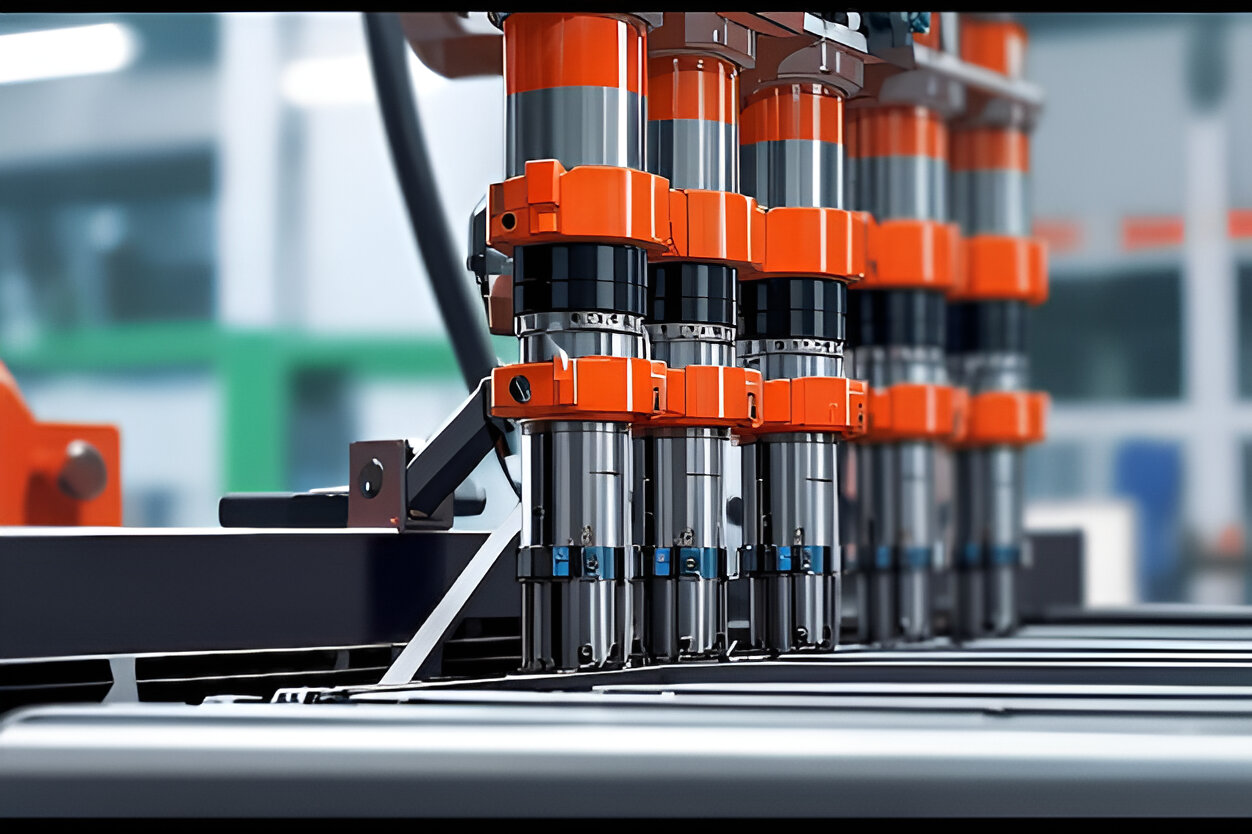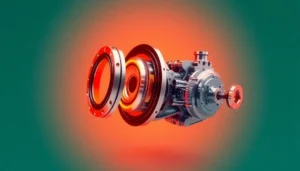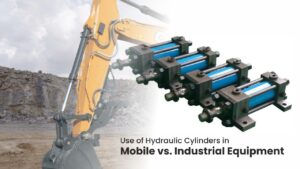If you build, shape, cut, lift, or mold, your tools take on hard jobs each day. But here’s a sharp truth — not all gear can keep up. You need hydraulic power to match your plant’s pace and push. From mills to diggers to mold shops, it’s the one thing that drives smooth, raw strength.
Now think about this. The market for industrial hydraulic gear may hit $52.6 billion by the next ten years, with a sharp growth each year. Why? Because plants now want a long life, less fixed work, and more push for less fuel. That’s where hydraulic power wins.
In this blog, we’ll break down how hydraulic cylinders work best in such roles. We’ll also touch on the parts like the hydraulic cylinder piston, seals, and small hydraulic cylinder sets that increase your industry’s work each day.
Why Hydraulic Power Still Wins in Industrial Applications
Not all force is the same. Gear can use air, power, or fluid. But hydraulic power gives raw force with fine moves. That’s why steel, cement, or mold shops pick it. You can lift more, push deep, or mold fast — all from a small hydraulic cylinder or a full stroke set.
Hydraulic cylinders are firm, less loud, and don’t break down as fast. They stand dust, heat, and long work hours. They can hold weight for long with no sag. And most of all, you can fix them quickly with a smart repair guide.
Let’s now look at four top gains that set this tech apart.
More Force in Less Space – That’s the Real Push
When you need more drive in less room, go with fluid force. Hydraulic power lets you do more with less size.
A small hydraulic cylinder may lift tons. In mills or mold shops, this means less frame, more yield. Plus, you don’t need huge tanks or parts. It cuts costs from day one.
Why it works:
- Fluid can’t be squeezed. So, each pump move gives a strong push.
- Even at low RPM, you get max push.
- Pumps last long when sized right.
More to this: If your work calls for stroke moves, the hydraulic cylinder piston holds tight with near no leak. You get clean stops, sharp shifts, and soft landings — no jumps or lags.
Most of all, the seals in these tools — yes, hydraulic cylinder seals — don’t break fast. That means less fix work and long use.
Safe for Heat, Dust, and Long Shifts
Mills, kilns, or dig yards all have one thing — rough zones. Gear that runs there must face heat, dust, and non-stop work. Here too, hydraulic power shines.
Hydraulic cylinders are sealed. That means no air or dust goes in. They also use oil, which cuts heat by flow. In long shifts, they stay cool and don’t lose push.
Key parts at work:
- Hydraulic cylinder piston – slides with no wear.
- Seals – block leak and dust.
- Rods – coated to beat rust and scratch.
Extra tip: Use seals made of NBR or Viton. They stay fine in hot spots.
Even more, the force in these tools is smooth. So, in a mold plant or press line, you don’t lose your mold size or miss the mark. With clean cylinder maintenance, you get years of use.
Fits All Gear Sizes — From Molds to Mills
One more edge? These tools fit all job types. You get small hydraulic cylinders for tight mold spots and big ones for lift arms in steel plants.
Here’s a quick look:
|
Gear Type |
Cylinder Size |
Use Case |
|
Mold Press |
Small to Mid |
Short stroke, clean cut moves |
|
Steel Mill Rollers |
Large |
Long stroke, high force push |
|
Machine Tools |
Mid |
Clamp, press, shape steel |
|
Cement Batch Mixer Arms |
Large |
Mix arm lift, tilt, or hold |
|
Plastic Molding Gear |
Small to Mid |
Fast close and slow open moves |
As seen, size fits all. And you don’t need a full frame change. The mount stays the same — swap in new rods, seals, or pipes, and your tool is set.
Want to fine-tune stroke? Use smart flow valves. Want less heat? Add coolers. The scope to tweak is wide with hydraulic power.
Long Life and Less Repair with Simple Care
No one wants gear that breaks. A huge win with hydraulic cylinders is they don’t die fast — if you care for them.
You check:
- Oil clean and full.
- Rods straight.
- Seals firm.
- Mounts tight.
That’s it. Basic checks. No tech needed.
Hydraulic cylinder seals work best if oil is clean. If you use the right type (NBR, PU, PTFE), they last for years. A bent piston? Fix fast. Else you lose full force.
Some tricks pros use:
- Pressure test each 6 months.
- Change oil once a year.
- Use filters at the tank base.
One bad rod or seal and the job stops. But if your care game is strong, your hydraulic power tools won’t quit mid-shift.
Conclusion: It’s Time to Choose Power That Lasts
Each tool in your plant must earn its space. If one part breaks, the line halts. So why wait for that? Go with smart tech that takes stress, works in heat, and lasts years.
Hydraulic power wins on all fronts — force, size, fit, and life. From a small hydraulic cylinder to a press arm, each one adds real push to your floor.
At THM Huade, we don’t just sell parts, we back them with years of use, top grades, and match fit for each job.
Pick smart. Pick THM. Share this post with people who fix or run gear. Let’s help each plant push more — for less.
FAQ
Can I use water instead of oil in a hydraulic system?
Not safe at all. Water has no lube. It rusts rods, pits tubes, and wrecks hydraulic cylinder seals. Oil made for your tool gives smooth flow and keeps heat low. Stick to that.
What’s the fix if my cylinder jerks at mid-stroke?
That jerk means air in line, bent rod, or loose mount. Drain air. Check oil. If the stroke still jumps, the hydraulic cylinder piston might be worn or stuck. Fix that first.
How do I store a spare small hydraulic cylinder?
Wipe it clean. Coat the rod with oil. Plug both ports. Keep in a dry box or shelf. Look for rust or seal dry-out once a month. Even a small hydraulic cylinder needs care when not in use.
Do I need to purge air after each repair?
Yes. Don’t skip this. Air hurts stroke flow and may burst seals. After any fix, run full stroke slow — twice or more — to push out trapped air and stay safe.




